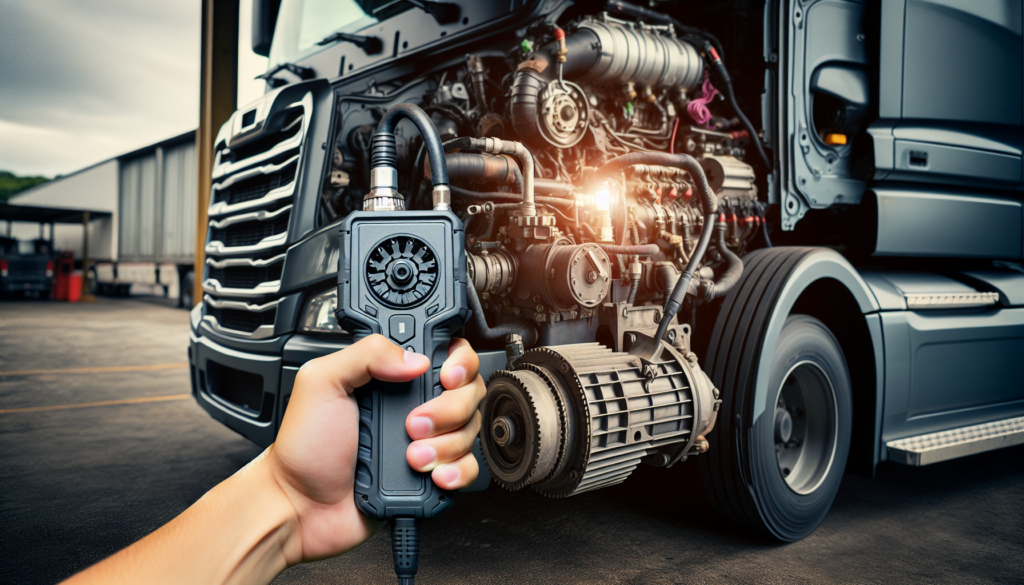
Imagine you’re ready for a haul in your Freightliner Cascadia, but the summer heat is ramping up, and your A/C is letting you down. Don’t sweat it—your A/C compressor clutch may be the culprit, and with the right know-how, you can troubleshoot and repair it yourself. In “How Do You Identify And Fix A Malfunctioning A/C Compressor Clutch In A Freightliner Cascadia?” you will discover the step-by-step process to diagnose the issue effectively. Learn to spot the signs of a faulty clutch and get practical tips on carrying out a fix that gets your cabin cool and comfortable, ensuring you can hit the road with confidence, regardless of the temperature outside.
Understanding the A/C System in Freightliner Cascadia
When you’re on the road in your Freightliner Cascadia, especially during the warmer months, you rely on your air conditioning (A/C) system to keep the cabin comfortable. This system is a complex network of components that work together to cool the air, and understanding how it functions can help you maintain and troubleshoot issues more effectively.
Components of the A/C System
Your Freightliner Cascadia’s A/C system comprises various crucial components, including the compressor, condenser, evaporator, expansion valve or orifice tube, and drier or accumulator. The compressor, which is considered the heart of the system, circulates the refrigerant through the A/C system. The condenser dissipates heat, the evaporator cools the air inside the cabin, the expansion valve or orifice tube regulates refrigerant flow, and the drier or accumulator removes moisture and contaminants from the refrigerant.
Role of the Compressor Clutch
The compressor clutch plays a pivotal role in controlling when the A/C compressor activates. It connects the compressor to the engine’s power via a belt when cooling is needed and disengages when the A/C is turned off, helping to conserve power. The clutch consists of a coil, a hub, and a pulley. When you switch on the A/C, an electrical charge energizes the coil, creating a magnetic field that pulls the hub and pulley together, engaging the compressor.
Common A/C System Configurations
Freightliner Cascadia trucks typically come with one of a few common A/C system setups. The most prevalent is the belt-driven system, where the compressor is powered via the engine’s serpentine belt. Another configuration may involve an electrically driven compressor found in hybrid or electric vehicles. Understanding your specific configuration is vital for diagnostics and repairs.
Symptoms of a Faulty A/C Compressor Clutch
If you notice your A/C system isn’t working as it should, the compressor clutch could be at fault. Pay close attention to these symptoms to identify a problem with the clutch.
Inability to Cool the Cabin
A clear indication of a compressor clutch issue is when the A/C fails to cool the cabin. If the clutch isn’t engaging, the compressor won’t pump refrigerant through the system, leading to no cooling effect.
Unusual Noises During A/C Operation
An A/C compressor clutch that’s on the fritz may emit squealing, grinding, or chattering noises. These sounds occur due to wear or misalignment in the clutch components.
Visible Wear or Damage
Upon inspection, you might see signs of wear, such as excessive dust from clutch material, or damage to the clutch’s components. It can manifest as cracks, pitting, or any other kind of physical degradation.
A/C Compressor Clutch Does Not Engage
When the engine is running and the A/C is switched on, the clutch should engage. If it doesn’t, it could be due to electrical malfunctions, a blown fuse, issues with the A/C system’s pressure switches, or a faulty clutch coil.

Safety Precautions and Preparations
Before diving into diagnostics or repairs, prioritize your safety with these steps.
Disconnecting the Battery
Always disconnect the vehicle’s battery before working on the electrical aspects of the A/C system. This prevents any electrical shocks or unintended vehicle operations.
Wearing Protective Equipment
Protective gloves and eyewear are essential as you’ll be working with the potential for flying debris and handling refrigerant, which can be harmful to skin and eyes.
Gathering Necessary Tools and Equipment
Have all the necessary tools on hand before starting the work. This includes wrenches, screwdrivers, a multimeter, and A/C-specific tools like a clutch hub puller and gauge set.
Diagnostic Steps for the A/C Compressor Clutch
Follow these steps to diagnose a faulty compressor clutch.
Checking for Electrical Issues
Use a multimeter to test the voltage at the compressor clutch connector. If there’s no voltage, you may be dealing with a blown fuse, a failed relay, or a broken wire.
Inspecting the Compressor Clutch Wiring
Visually inspect the wiring leading to the clutch for any damage, wear, or disconnections that could prevent power from reaching the clutch.
Testing the Compressor Clutch Coil
With an ohmmeter, test the resistance of the clutch coil. If it falls outside the specified range for your Cascadia model, the coil may need replacing.
Determining if the Clutch is Receiving Power
If the coil checks out, ensure it’s getting power when the A/C system is on. If there’s power but the clutch isn’t engaging, the problem may be mechanical.

Inspection of the Compressor Clutch Components
Assessing the Clutch Air Gap
Check the air gap between the clutch hub and pulley with feeler gauges. An incorrect gap can prevent engagement or cause slipping.
Examining the Clutch Hub and Pulley
Look for evidence of damage or wear on the clutch hub and pulley. Any irregularities could indicate it’s time for replacement.
Looking for Signs of Overheating or Oil Contamination
Overheating can cause discoloration of the clutch components, while oil contamination from a compressor leak can lead to clutch failure.
Removing the Faulty Compressor Clutch
With a diagnosis in hand, proceed to remove the faulty clutch.
Releasing the Tension from the Serpentine Belt
Carefully release the tension and remove the serpentine belt from the compressor’s pulley before attempting to remove the clutch.
Separating the Clutch from the Compressor
Using the proper tools, separate the clutch hub from the compressor shaft. If necessary, employ a clutch hub puller to disengage it.
Handling the Clutch Components with Care
As you remove the clutch, be mindful of the components to avoid causing damage to the compressor or surrounding parts.

Selecting the Correct Replacement Clutch
Choosing the right replacement is crucial for A/C performance.
Compatibility with Freightliner Cascadia Model
Ensure that the replacement clutch is compatible with your specific Freightliner Cascadia model and year to guarantee proper fit and function.
Evaluating Aftermarket versus OEM Clutches
Weigh the pros and cons of aftermarket versus original equipment manufacturer (OEM) clutches. Aftermarket parts may be more affordable, while OEM guarantees exact fitment and typically comes with a warranty.
Importance of Quality and Warranty
Choose a clutch that is of high quality and comes with a warranty to ensure longevity and the possibility of recourse should the part fail prematurely.
Installing the New Compressor Clutch
Aligning the Clutch Components
Carefully align the new clutch components during installation, ensuring they fit together perfectly to avoid future issues.
Setting the Correct Air Gap
Adjust the new clutch to the correct air gap specification for your Cascadia model to ensure proper engagement and operation.
Ensuring Tight and Secure Fitting
Confirm that all the components are fitted tightly and secured in place, preventing any potential slippage or misalignment.

Reassembly and Testing
After the new clutch is installed, reassemble the system and test it.
Reinstalling the Serpentine Belt
Reinstall the serpentine belt, making sure it is properly aligned and tensioned on the pulleys.
Reconnecting Electrical Connectors
Reconnect any electrical connectors that were detached during the clutch replacement process, ensuring secured and corrosion-free connections.
Testing the A/C System for Proper Operation
Finally, test the A/C system thoroughly to confirm that the new clutch is engaging correctly and the system is cooling efficiently.
Maintenance Tips to Avoid Future Clutch Issues
Regular maintenance can prolong the life of your A/C system.
Regular A/C System Inspection
Inspect your A/C system components regularly for signs of wear or damage and keep the system clean, including the condenser and evaporator coils.
Timely Replacement of Wearable Parts
Replace wearable parts such as the drier/accumulator and expansion valve or orifice tube as recommended by the manufacturer’s service intervals.
Monitoring System Performance Over Time
Keep an eye on your A/C system’s performance, noting any changes in cooling efficiency or operation noises, and address them promptly to prevent bigger issues.